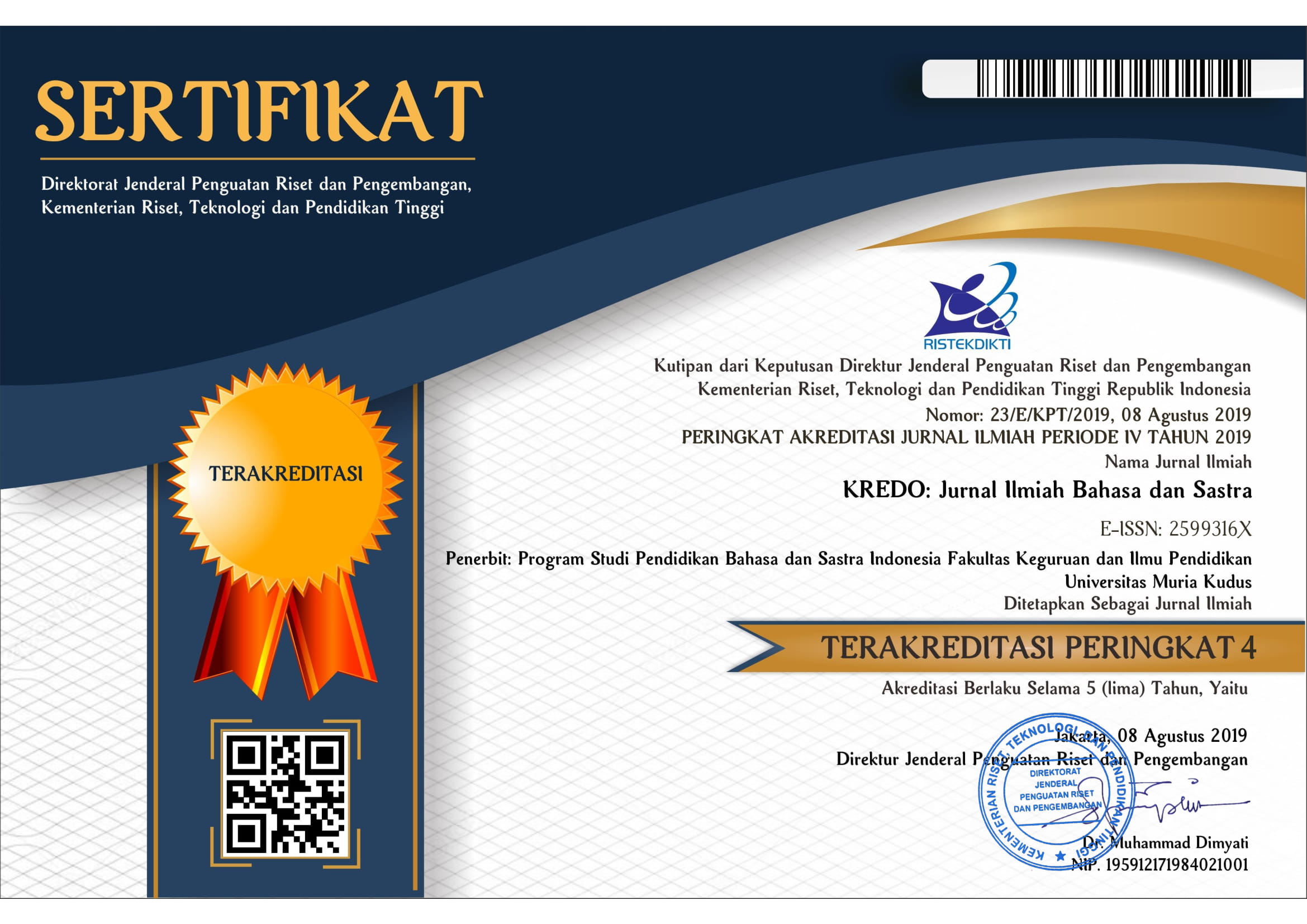Analysis of Pragmatic Presupposition of Characters in Disney's Luca Film
Abstract
Bahasa memiliki peran penting dalam komunikasi. Artikel ini menyelami ranah wacana sinematik dengan melakukan analisis pragmatis presuposisi dari film animasi "Luca". Dengan mengacu pada prinsip-prinsip pragmatika, penelitian ini bertujuan untuk mengungkap dan menguji presuposisi yang terkandung dalam dialog dan interaksi karakter, memberikan pemahaman tentang asumsi implisit yang membentuk narasi. Dengan pendekatan kualitatif, penelitian ini mengeksplorasi bagaimana presuposisi berkontribusi pada pemahaman penonton tentang karakter, dinamika plot, dan elemen tematik dalam film tersebut. Analisis juga mempertimbangkan nuansa budaya dan kontekstual yang dapat memengaruhi interpretasi presuposisi dalam konteks sinematik. Melalui eksplorasi ini, ditemukan total 177 data jenis presuposisi. Diantaranya, presuposisi faktif menyumbang 74 data (42%), sedangkan presuposisi struktural mencakup 49 data (28%). Presuposisi eksistensial ditemukan dalam 33 data (19%), diikuti oleh presuposisi non-faktif dengan 14 data (8%). Selain itu, presuposisi leksikal diamati dalam 4 data (2%), dan presuposisi kontrafaktual merupakan 3 data sisanya (1%). Presuposisi faktif sering muncul dalam film ini karena seringnya narasi film bergantung pada kebenaran yang sudah jelas dan asumsi-asumsi dalam ceritanya.
Language plays a crucial role in communication. This article delves into the realm of cinematic discourse by undertaking a pragmatic presupposition analysis of the animated film "Luca." Drawing on the principles of pragmatics, this study aims to uncover and examine the underlying presuppositions embedded within the characters' dialogues and interactions, shedding light on the implicit assumptions that shape the narrative. By employing a qualitative approach, the research explores how presuppositions contribute to the audience's understanding of the characters, plot dynamics, and thematic elements in the film. The analysis also considers the cultural and contextual nuances that may influence the interpretation of presuppositions in the cinematic context. Through this exploration, a total of 177 data types of presuppositions were identified. Among these, factive presuppositions accounted for 74 data (42%), while structural presuppositions comprised 49 data (28%). Existential presuppositions were found in 33 data (19%), followed by non-factive presuppositions in 14 data (8%). Additionally, lexical presuppositions were observed in 4 data (2%), and counter-factual presuppositions constituted the remaining 3 data (1%). The most used type of presupposition found in this movie is factive presupposition as evidenced by the frequent reliance on established truths and assumptions within the narrative of this film.
Keywords
Full Text:
PDFDOI: https://doi.org/10.24176/kredo.v7i2.12302
Refbacks
- There are currently no refbacks.
In Collaboration With:
This work is licensed under a Creative Commons Attribution-NonCommercial-ShareAlike 4.0 International License.








